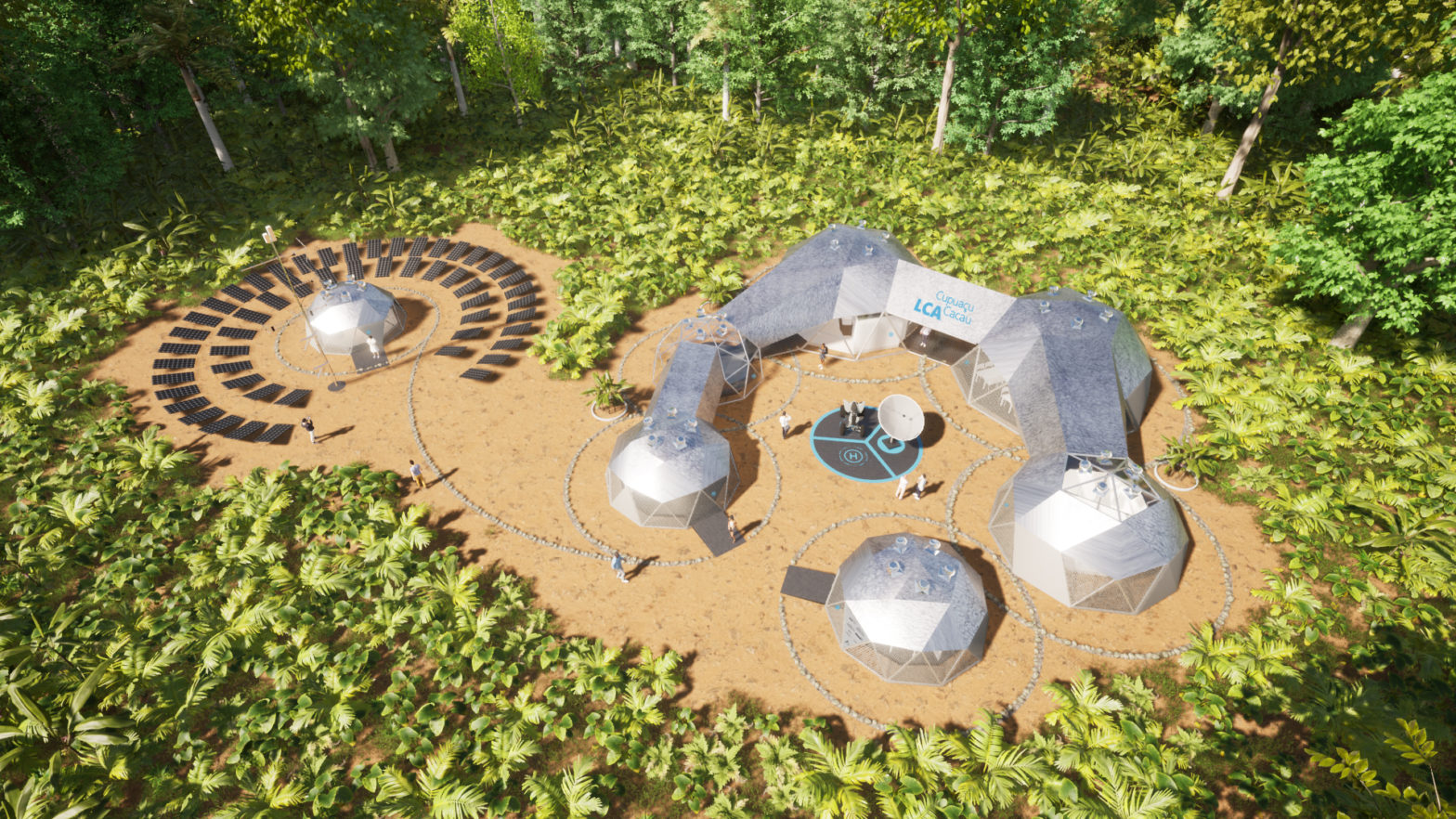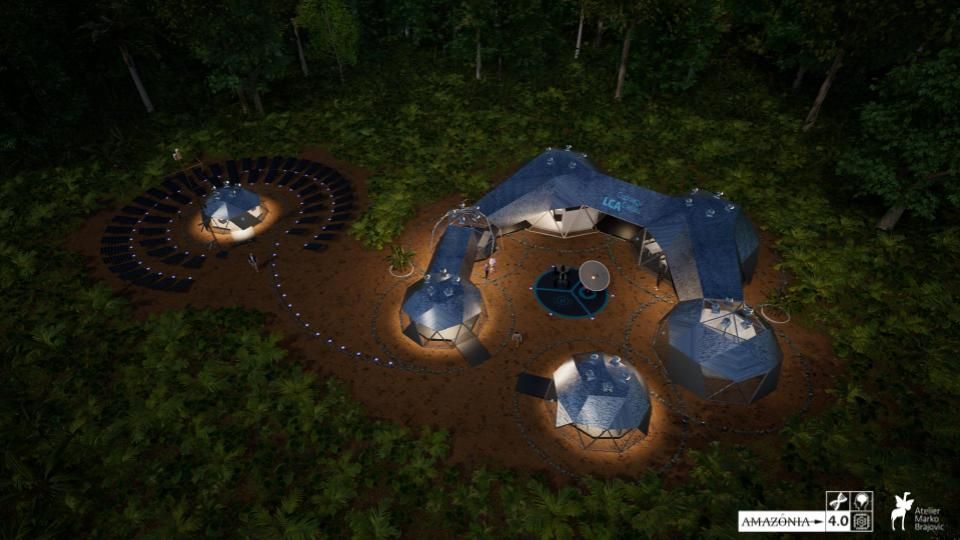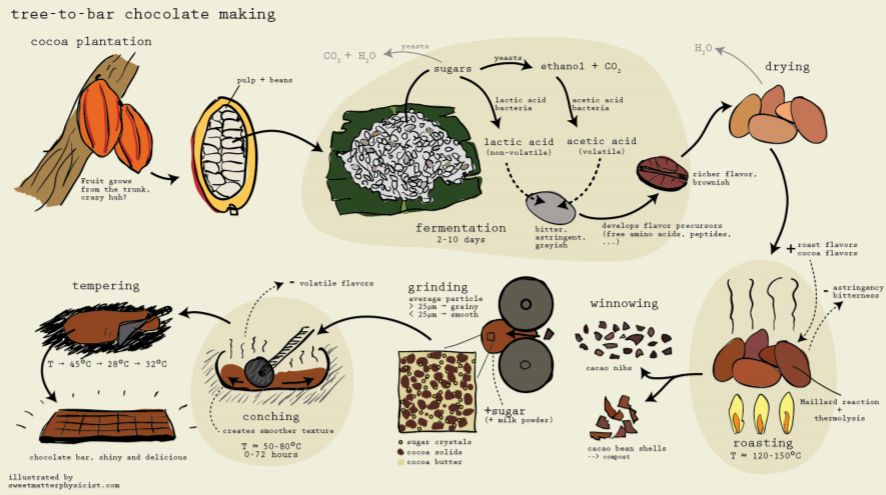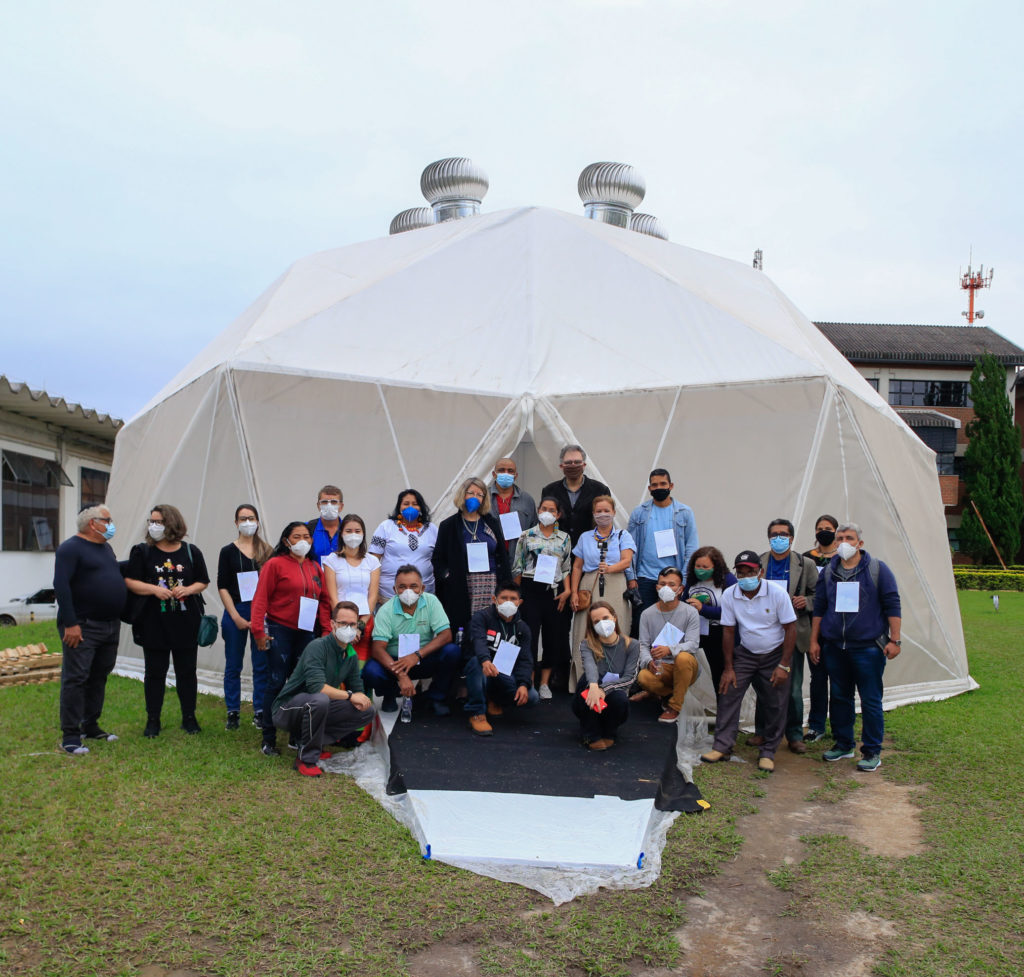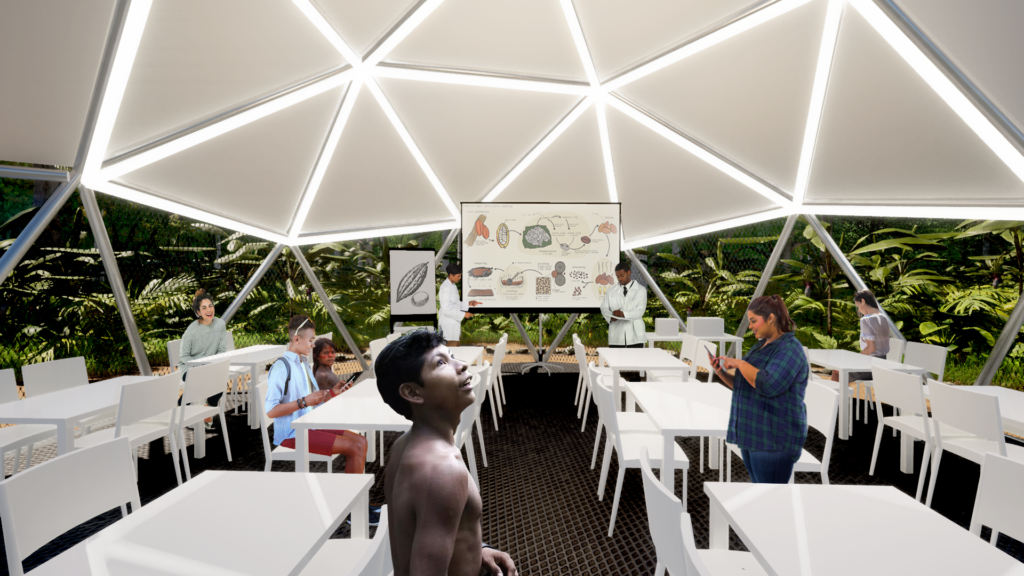The project will take the region’s first laboratory-factory prototypes in the first quarter of 2022. Their goal is to expand the capacity of communities to add value to biodiversity products.
The Initiative
- Name
- A project that combines high technology and traditional knowledge to promote the bioeconomy and businesses that keep the forest standing
- Who’s involved
- Brazilian researchers, Atelier Marko Brajovic, Omega7 Systems and other partners
- What is it
- trains members of local communities and installs mini-factories for products from the forest to increase their added value
- Where is it
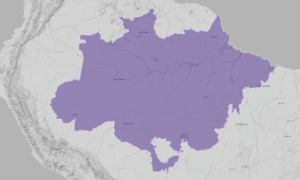 Brazilian Amazon
Brazilian Amazon
The Amazon plays a key role in regulating the global climate and maintaining biodiversity and ancestral cultures that are unique in the world. Therefore, the high rates of deforestation in the forest rekindle the need for urgent changes in the dominant model of socioeconomic development, currently based on agribusiness, energy generation, and legal and criminal mining. Demand is reinforced by governments and other sectors for global agreements to protect forests and indigenous peoples.
The scenario calls for production alternatives capable of conserving, sustaining and developing the Amazon, combining innovative technologies with the knowledge of its peoples. Amazônia 4.0 was created in this context, an initiative linked to a “new industrial revolution” which combines various sectors to study, use, and publicize the forest’s potential as a source of economic resources.
One of Amazônia 4.0’s fronts works with model factories which will be installed for the production of goods that take advantage of the biological diversity of the Amazon. The first prototypes from the factories will arrive in the region in early 2022. They will be community empowerment hubs in non-destructive economies. The other front runs business schools in partnership with the Conexsus Institute. A documentary about the venture, released this year, was awarded at festivals in Europe and the United States.
To explain the project, PlenaMata spoke with its scientific director, biologist Ismael Nobre, PhD in Human Dimensions of Natural Resources at the University of Colorado (United States) and post-doctorate fellow in Population Studies from the State University of Campinas (Unicamp). In his point of view, using state-of-the-art technologies to produce and transport products derived from biodiversity is one of the best ways to protect the Amazon.
The conversation took place on the same day that Brazil, governed by Jair Bolsonaro, published a new Amazon deforestation record, with over 13,200 km² lost between August 2020 and July 2021.
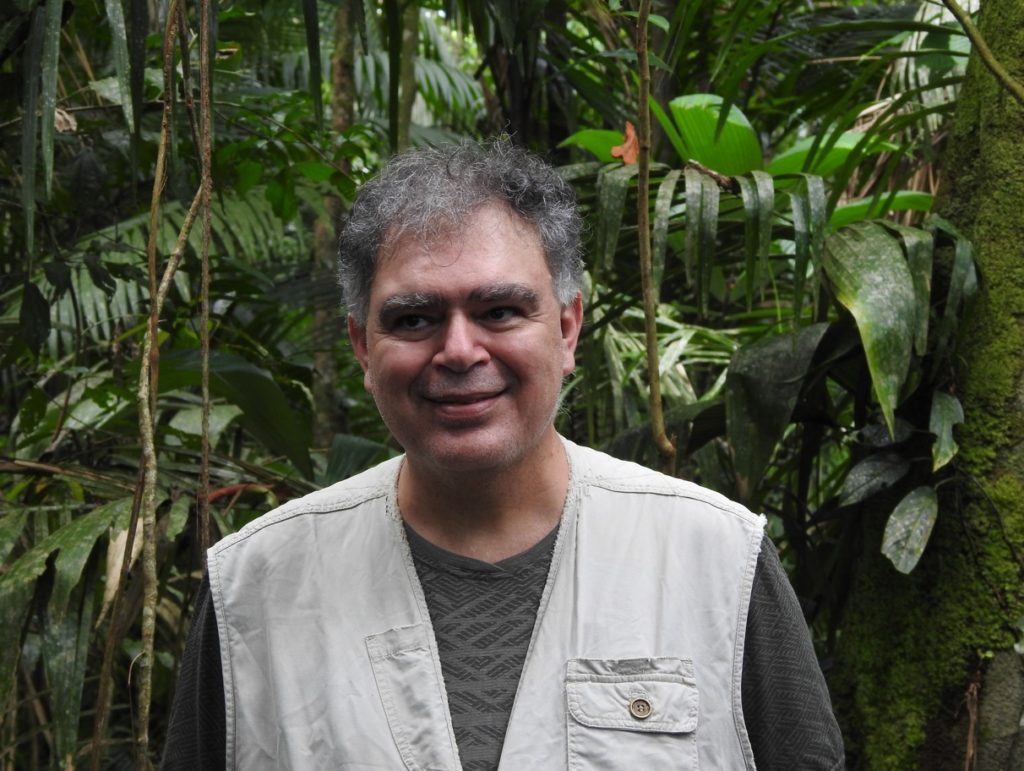
It is urgent that we create an economic alternative that halts the “march of folly”, the destructive use of the forest that is leading us to an unprecedented global climate and ecological crisis. We have to value the preserved forest to balance the game with commodities and other conventional economies.
Ismael Nobre, Scientific director of Amazônia 4.0
Why should the Amazon be the great stage for this “industrial revolution”, which combines high technology and ancestral knowledge to change the predominant productive-extractive model?
The Amazon is a privileged place for this because of its very nature, its extreme biodiversity, from which products that interest to society as a whole can be extracted. Some are already known in Brazil and around the world, such as açaí, while others need more research and investment to expand their use. But all have great potential for an intelligent appropriation of these resources.
It is also urgent that we create an economic alternative that halts the “march of folly”, the destructive use of the forest that is leading us to an unprecedented global climate and ecological crisis. We have to value the preserved forest to balance the game with commodities and other conventional economies.
This is reminiscent of the “nature-knowledge economy” proposed by pioneering geographer Bertha Becker (1930-2013). How would the balance between conservation and production work in this new development model for the Amazon?
Amazônia 4.0 started as a “third way in the Amazon”, just trying to escape the dichotomy between conservation and production. Sustainable development has received political and financial investments over the last 30 years, but this has not changed the threats to the existence of the forest, because these initiatives have always maintained the Amazon as a supplier of raw materials whose value addition takes place in other regions, such as state capitals and large cities. This maintains a typical colonial model.
We want to change this reality and add as much value as possible at the origin of the raw material, that is, inside the Amazon. We will take industries and other development models to places where this perspective has never arrived, such as in areas where, for example, middlemen travel to buy nuts and other primary products. With these changes, the average value per kilogram of cocoa produced in the forest can go from R$15 to up to R$300, expanding the distribution of income and quality of life in the region. This has to benefit those who manage and keep the forest alive.
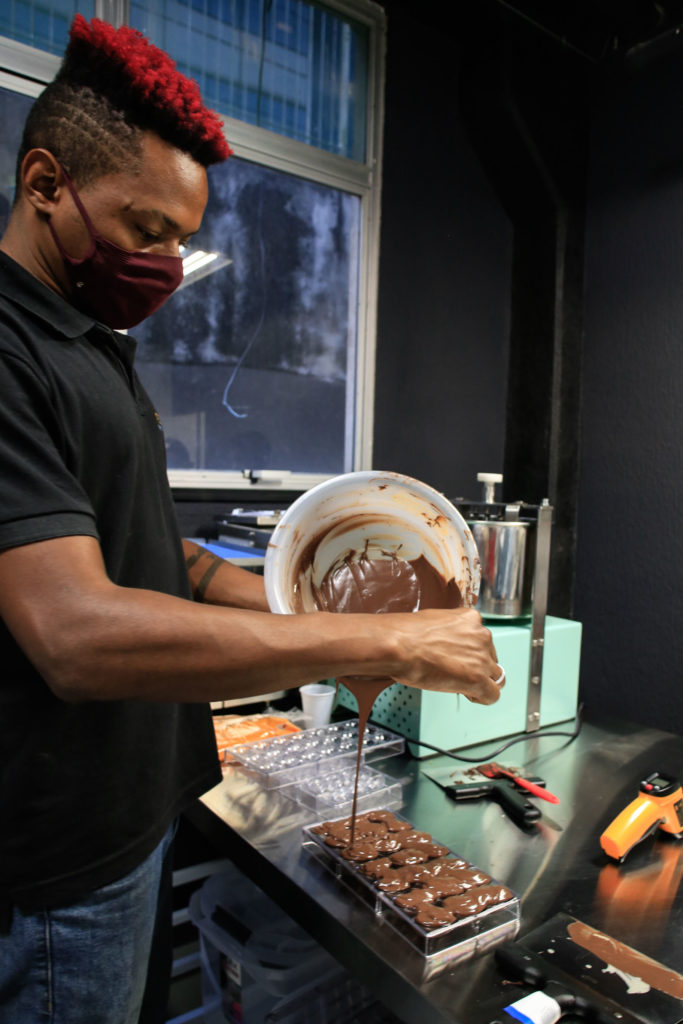
How will the creative laboratories and the forest business schools, two strong arms of the initiative, work?
I need to explain that we started planning in 2017, in this aspect of adding value to forestry production with innovative technologies for the region and, in 2018, we started to study the cocoa and cupuaçu production chains, for the production of chocolate and cupulate, chocolate made with cupuaçu. Construction of the machinery and software began in 2020, when the Covid-19 pandemic hit. Prototypes were built in São José dos Campos (SP), where Amazonian communities participated in prior training.
After this delay, in the first quarter of 2022, the chocolate factory laboratory will begin its route through communities in Pará, in the Moju-Miri quilombo, in the Tapajós-Arapiuns Extractive Reserve, a village on the banks of the Acará River, and in a land tenure reform near the Tapajós National Forest, in Belterra. Cocoa and cupuaçu are produced in these regions. The technology can be extended to many other products. Initially, the structure will move through the communities for their training, for two months in each location. They need alternatives so that they do not migrate to conventional economies such as livestock, as occurred in the Chico Mendes Extractive Reserve, in Acre.
How Industry 4.0 can add value to forest products
— Adopting techniques to increase the durability of products, using freeze-drying techniques, generating high-value material for the manufacture of ice cream, yoghurts, etc. Examples are cupuaçu, açaí, and camu-camu powder, which maintain almost all the nutritional qualities of the original food.
– Use of solar energy in Amazonian communities, where the rate of solar radiation is much higher than in European countries, at reasonable costs and without any damage to the forest, its rivers and inhabitants.
– Connecting the entire Amazon through a Brazilian geostationary telecommunications satellite that already exists and can provide broadband in any region of the Brazilian Amazon
– Enable members of local communities and students to work in partnership with professors, researchers, and entrepreneurs linked to startups and specialists in fostering and supporting small businesses and sustainable businesses.
Source: Futuribles
How will they manage to transport production through the Amazon, where many regions still lack infrastructure?
Each case is different. The Rio Acará region is close to the state capital, Belém. Goods can be transported there by boat or truck and follow by plane. From one day to the next, Amazonian chocolate can be sold in São Paulo. Some airlines have even supported the distribution of handicrafts from the Amazon.
The Belterra region also sells products by road. From other locations, it takes up to six hours by boat to transport local goods. The Amazon’s sustainable future also depends on investments in infrastructure associated with new economies, such as quality airports that favor production and trade with added value that will help keep the forest standing. But that depends on many actors beyond Amazônia 4.0.
What technologies are associated with production?
The factory-laboratories are easy to handle, will have solar energy – a clean source – and will purify their own water for production. The entire chain will be secured by blockchain and digitally tracked from the forest to the final consumer. Packaging will be suitable for the climatic conditions of the Amazon. We are also studying the use of drones for transport and delivery in the region, as is already the case in the United States and other countries.
Who supports Amazônia 4.0 and who are its main partners?
So far, our main source of funding came from philanthropic institutions, such as the Humanize, Arapyaú, and Clima e Sociedade institutes, the Good Energies Foundation, from the Netherlands, and others such as Banco Itaú, the French and Australian embassies, and Aldo Solar, a company which donated solar panels to laboratory factories. We also signed partnerships with institutions such as the University of São Paulo (USP), for tracking technology, and the Conexsus Institute, so that communities can transform pilot projects into their own businesses.
Are deforestation and growing disinvestments in science and technology not dangerously delaying this paradigm shift in socio-economic development in the Amazon?
Amazônia 4.0 is an answer to this challenge. Even if we were not yet faced with such critical political and deforestation scenarios and the threat of a “breaking point” from which forest degradation would be unstoppable, we already knew in 2017 that the implementation of infrastructure and deforestation were strongly fragmenting natural vegetation.
In 2017, when we started thinking about Amazônia 4.0, we already had this forecast of unsustainable regional development amplified by the global climate crisis. The preserved forest has value, no doubt, but, in the current scenario, it seems to have no value and is being converted in a way that can no longer continue.
Thus, specific successful sustainable production experiences need to gain scale for the benefit of the 29 million people who live in the region.
A summary of the 7 fundamentals of the Amazônia 4.0 concept
1. Accumulated knowledge represented by Amazonian biodiversity
2. Ability to understand the intrinsic knowledge of the forest.
3. Applying this accumulated knowledge to improve human life.
4. Production of goods and services from biodiversity, using abundant inputs in extractive and agroforestry systems and transforming them into something of value with the resources and technological facilities available today
5. Construction of a bioeconomy that is both local and global.
6. Equitable distribution of socioeconomic benefits, in which everyone gains from the offer of products resulting from sustainable forest use.
7. Intrinsic appreciation of the Amazon as a biome, showing that the most effective form of forest conservation in the medium and long term is precisely the engagement of societies at national and international level in its defense, maintenance, and sustainable use.
Source: Futuribles
Agreements signed at COP26 call for the protection of the forest and ancestral peoples. The European Commission wants products free from deforestation. A WTO report tied deforestation to international trade. But Brazil continues to set records for the destruction of the Amazon. What is needed for people to realize that there is no more room for economies that destroy the forest and other ecosystems?
Our work also involves analysis of this type of scenario. A movement that would have helped a lot in initiatives like Amazônia 4.0 was the Amazon Fund, which – and I avoid applying too many adjectives – lost its functionality. There were already debates for joint planning and large investments for the project. This would be like a snowball: once it starts rolling, with studies and good examples of use, we would automatically gain scale. But we need to break paradigms.
One of them would be to recognize that “nature is technology”. And there is no lack of knowledge: the Amazon has at least 450 species whose use is known and studied by science. It is also necessary to broaden the debate with other sectors, such as finance, to redesign investment models, with equipment manufacturers to meet the needs of this new economy, and with governments, so that they lead to a coherent management of natural resources and models of development.
There is so much money to promote agribusiness, but these resources have to be directed to models that today have little or no participation in formal economies. We also need a good “national plan”, which uses our capacity and intelligence to receive qualified international resources, which are abundant, but which depend on production consistent with the reality of global climate crises and biodiversity loss.
What will happen if the country insists on deforestation?
The threats of climate change are real and will bring catastrophic consequences to the country and the world. The preservation of the Amazon is a central issue in this global scenario, which calls for joint efforts by countries to reduce the causes and effects of the climate crisis.
There are solutions to this reality. There are many environmental assets in the Amazon that our people can transform into economic assets. Our nation has the responsibility to provide, to build this transformation, together with the population and the intelligence of the Amazon.
Como se engajar
- Site da iniciativa
- https://amazonia4.org/
- Contatos
- [email protected]
- Redes sociais
Image at the top of the page shows a prototype of the laboratory factories that will be brought to the Amazon in 2022. Credit: Daniel Mira/NOUS Comunicação Consciente. Portrait of Ismael Nobre by Sonia Soares/Amaz



